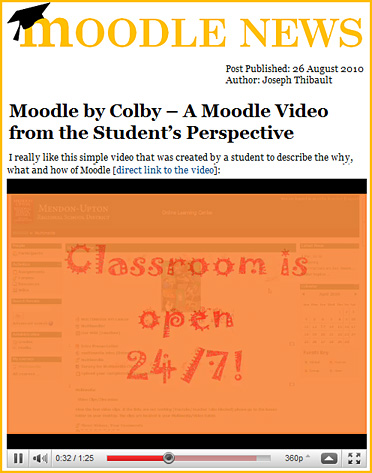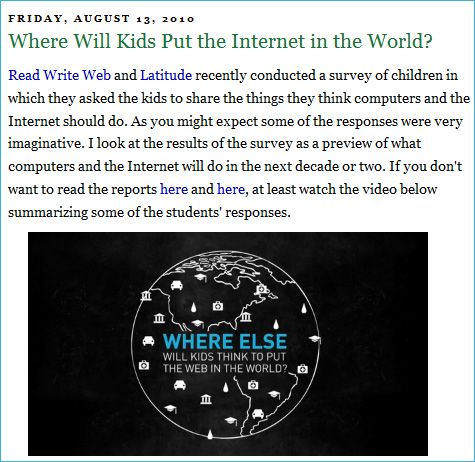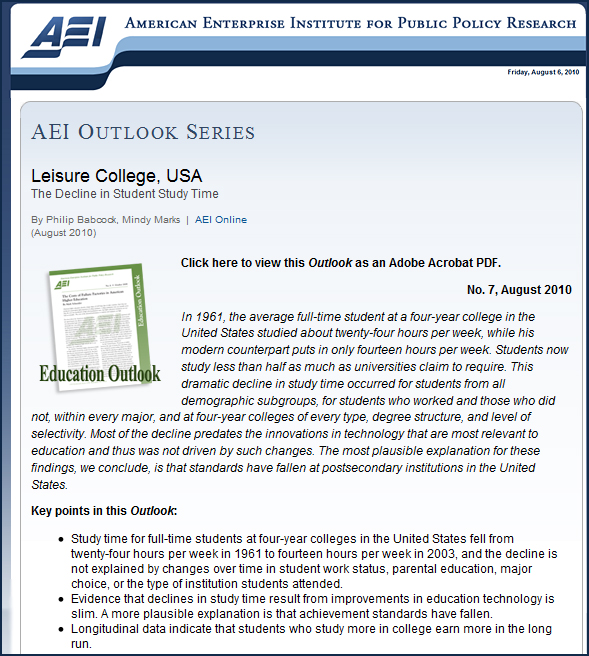From DSC:
Here in the United States, the waste continues…
As I was reading the article mentioned below, I was reminded of a graphic I saw a while back after the April 20 Deepwater Horizon oil rig explosion:
.
.
This graphic reminds me of a very valuable resource that still isn’t being “realized” — and, as a result, the leakage continues to cause a mess. And that has to do with the amazing amount of talents, abilities, and gifts that are being wasted daily when students drop out of school or college.
So I appreciated hearing about what some of the community colleges are doing to try to “cap the spill” — to stop this waste of talent.
We must help students find and develop their passions. Should we look at changing some of the requirements/curriculums out there? If an emphasis on STEM isn’t working, is it time to try something else like arts, music, game design, shop/woodworking, automotive work, or something else that many of these same students might be more passionate about?
Addendum 4/5/11:
Also see:
Community Colleges Get Creative With Remedial Education — from edweek.org by Caralee Adams
Record numbers of students are arriving on community college campuses this fall, but a majority of them—nearly 60 percent—aren’t academically prepared to handle the classwork.
Three out of every five community college students need at least one remedial course, and fewer than 25 percent of those students successfully earn a degree within eight years, according to the National Education Longitudinal Study.
“We really have to figure out how to get developmental education right, or any dream that we have of increasing the number of college graduates in this country or eliminating disparities across racial and ethnic groups—that dream is going to tank,” said Kay McClenney, the director of the Community College Survey of Student Engagement and an adjunct faculty member in the Community College Leadership Program at the University of Texas at Austin.
Pushed by federal expectations, tightening budgets, expanding enrollments, and what the foundation-supported Strong American Schools campaign estimatedRequires Adobe Acrobat Reader to be a $2 billion-and-rising annual cost for remedial education, community colleges have started experimenting with a range of strategies to address those numbers.
Forget what you know about good study habits — from the NY Times by Benedict Carey
Take the notion that children have specific learning styles, that some are “visual learners” and others are auditory; some are “left-brain” students, others “right-brain.” In a recent review of the relevant research, published in the journal Psychological Science in the Public Interest, a team of psychologists found almost zero support for such ideas. “The contrast between the enormous popularity of the learning-styles approach within education and the lack of credible evidence for its utility is, in our opinion, striking and disturbing,” the researchers concluded.
…
Cognitive scientists do not deny that honest-to-goodness cramming can lead to a better grade on a given exam. But hurriedly jam-packing a brain is akin to speed-packing a cheap suitcase, as most students quickly learn — it holds its new load for a while, then most everything falls out.
“With many students, it’s not like they can’t remember the material” when they move to a more advanced class, said Henry L. Roediger III, a psychologist at Washington University in St. Louis. “It’s like they’ve never seen it before.”
When the neural suitcase is packed carefully and gradually, it holds its contents for far, far longer. An hour of study tonight, an hour on the weekend, another session a week from now: such so-called spacing improves later recall, without requiring students to put in more overall study effort or pay more attention, dozens of studies have found.
No one knows for sure why. It may be that the brain, when it revisits material at a later time, has to relearn some of what it has absorbed before adding new stuff — and that that process is itself self-reinforcing.
From DSC:
Re: research on learning styles…I would really like to know if these students were interviewed/reviewed in terms of which methods they preferred to learn by…which methods made learning more interesting…more fun..more efficient.
I’ll bet you “good students” can learn in spite of a variety of obstacles, issues, and/or teaching methods…they’ll learn what they need to in order to get the grade.
- But which method(s) do they — as well as less “successful” students — prefer?
- Which methods produce a longer-term ROI (besides just making it past the mid-term or final exam)?
- Which method(s) are more engaging to them?
- Which method(s) take less time for them to absorb the material?
We want students to love learning…but if you don’t like something, you surely won’t love it.
Learning amongst the riches: Students in the cloud — from CampusTechnology.com by Trent Batson
The cloud is where new learning conversations and related innovations are happening. Learning itself is becoming virtualized. Universities have a new role, but are as essential as ever: They are guiding learners in the process of learning amongst the riches.
70 multimedia company websites to peruse for inspiration/internships/jobs — from Innovative Interactivity by Tracy Boyer
Using the Livescribe Smartpen with students — from Assistive Technology
In the past couple of weeks I have worked with a number of students with learning disabilities who all have difficulty taking notes and I have introduced them to the Livescribe Smartpens. It was truly amazing to watch them use this device and the potential it has to open up all kinds of opportunities for them. For students with dyspgraphia, learning disabilities, auditory processing difficulties the Livescribe Smartpen is a godsend. Once I demonstrate the technique of just writing keywords on the dotted paper the student get the “aha” moment when I showed them the Paper Replay feature. For students who have difficulty listening and recording notes in real time this is truly a powerful tool and one I would put on my Back to School list of gadgets.
Smartpens. It was truly amazing to watch them use this device and the potential it has to open up all kinds of opportunities for them. For students with dyspgraphia, learning disabilities, auditory processing difficulties the Livescribe Smartpen is a godsend. Once I demonstrate the technique of just writing keywords on the dotted paper the student get the “aha” moment when I showed them the Paper Replay feature. For students who have difficulty listening and recording notes in real time this is truly a powerful tool and one I would put on my Back to School list of gadgets.
Where will kids put the Internet in the world? — from freetech4teachers.com by Richard Byrne
.
.
Also see:
Buffett, Gates persuade 40 billionaires to donate half of wealth — from OregonLive.com
SEATTLE — Forty wealthy families and individuals have joined Microsoft co-founder Bill Gates and billionaire investor Warren Buffett in a pledge to give at least half their wealth to charity.
Those who have joined the Giving Pledge, as listed on its website, are: Paul G. Allen, Laura and John Arnold, Michael R. Bloomberg, Eli and Edythe Broad, Warren Buffett, Michele Chan and Patrick Soon-Shiong, Barry Diller and Diane von Furstenberg, Ann and John Doerr, Larry Ellison, Bill and Melinda Gates, Barron Hilton, Jon and Karen Huntsman, Joan and Irwin Jacobs, George B. Kaiser, Elaine and Ken Langone, Gerry and Marguerite Lenfest, Lorry I. Lokey, George Lucas, Alfred E. Mann, Bernie and Billi Marcus, Thomas S. Monaghan, Tashia and John Morgridge, Pierre and Pam Omidyar, Bernard and Barbro Osher, Ronald O. Perelman, Peter G. Peterson, T. Boone Pickens, Julian H. Robertson Jr., David Rockefeller, David M. Rubenstein, Herb and Marion Sandler, Vicki and Roger Sant, Walter Scott Jr., Jim and Marilyn Simons, Jeff Skoll, Tom Steyer and Kat Taylor, Jim and Virginia Stowers, Ted Turner, Sanford and Joan Weill and Shelby White.
From DSC:
This is fantastic news! Excellent. I’m a big supporter of various charities myself — albeit with far fewer O’s ($$) behind the amounts of my checks than what these folks are able to provide! 🙂 But it got me to thinking…
If the United States government — or the government from another interested nation — could even get 1-2 billion of this enormous accumulation of wealth, think what could be done to create interactive, multimedia-based, engaging, customized/personalized, online learning-based materials that could be offered FREE of charge to various age groups/cognitive levels. Creative simulations and animations could be built and offered — free of charge — to students throughout the world. The materials would be available on a variety of devices for maximum flexibility (laptops, notebooks, iPads, iPhones, tablet PCs, workstations, etc.)
An amazing amount of digital scaffolding could be provided on a variety of disciplines. THIS could represent the Walmart of Education that I’ve been talking about…wow!
Gates’s millions: Can big bucks turn students into graduates? — from The Chronicle by Elyse Ashburn
— My thanks to Professor Paulo Ribeiro at Calvin College for this resource.
.
“The bottom line: study time fell within every demographic subgroup, for working students and those without jobs, for every major, and at every type of college. Further, students do not appear to have reduced study time to work for pay. Students appear to be studying less in order to have more leisure time.”
eSchoolNews Special Report: Empowering the iGeneration — from eSchoolNews.com by Ellie Ashford
Technology can help channel students’ drive to make a difference; here’s how.
Thanks to the democratizing power of technology, which lets anyone with an internet connection tap into resources from all over the globe, it’s now easier than ever for students to start their own companies or collaborate with peers to solve the world’s problems.
In fact, technology is empowering students in ways that earlier generations could only dream of. This trend has important implications for schools, which are under enormous pressure to engage students in ways that are relevant to the challenges of the 21st century.
Fortunately, a number of platforms exist to help educators harness students’ entrepreneurial spirit and their desire to make a difference in their world, and channel these in ways that advance the curriculum.
An overview of BIM (video) — by David Jones [via LearningDigitally.org]
A show and tell session around the Moodle plugin BIM. BIM aggregates individual student blogs and provides a management interface for teaching staff for marking and tracking student posts.
From bit.ly/bambim:
What is BIM?
BIM is an activity module for Moodle that provides the functionality required to allow:
- Students to register feeds.
Be they RSS, ATOM etc and from whatever source – usually a public blog. - Students to use that feed to respond to questions set by teaching staff.
- Teaching staff to track progress and, if so desired, mark and comment on student contributions.
- Coordinating staff to track and moderate marking by other staff.
- “Import” the marking into the Moodle gradebook.
There is a video of a presentation that gives an overview of BIM, including showing how it works for staff and students.
Earlier versions of BIM have been used mostly to manage individual student reflective blogs as described in (Jones and Luck, 2009; Reaburn, Muldoon and Bookallil, 2009).
The ELI Guide to Blogging talks about BAM, an early version of BIM.
Some additional resources about BIM are also available.
Design Boost is a four day bootcamp for prototyping digital learning products.
We’re looking for promising young innovators, to bring learning into the 21st century, to create digital products that excite and engage kids in meaningful learning. In partnership with IDEO, Startl is offering a multi-day immersion for designers and creators, hackers and coders, builders and entrepreneurs.
Boost isn’t about sitting around dreaming up pie-in-the-sky ideas. Its an intense whirlwind of activity, with lots of hands-on, real-world involvement in the design and product development process. You’ll be taking the seed of an idea and seeing whether you can grow it into an effective and marketable learning product. Along the way, you’ll be steeped in how to create user-centered, learning-rich and market-smart designs and learn the tricks that seasoned entrepreneurs use to generate new products quickly and cheaply. But you won’t be doing this on your own. You’ll be surrounded by inspiring peers and collaborating with them to amp up your creativity and rigor.
Startl’s first series of Design Boost will focus on the design of mobile applications for learning, targeting these primary platforms: Android, iPhone, Symbian and BlackBerry. We’re making this the focus because there’s a serious lack of high-quality mobile applications for learning and education on the market, so there’s a massive opportunity to make a difference and make your mark.
The Boot Camp will be a launching pad for participants to make their next entrepreneurial move, be it with Startl, IDEO, local firms, national brands or beyond.
Apply for the November 2010 Mobile Design Boost to be held in San Francisco November 11-14, 2010. (Application deadline – September 17, 2010)
The Basics – What You Need to Know Before Applying
A primer on what Startl is seeking in teams.
Mobile Design Boost Schedule & Agenda
…
From DSC:
Are there many college-level courses out there like this? This is a very interesting, real-world, engaging, hands-on approach — while offering numerous opportunities to collaborate.
Media:Scape-based setups would work well here.















